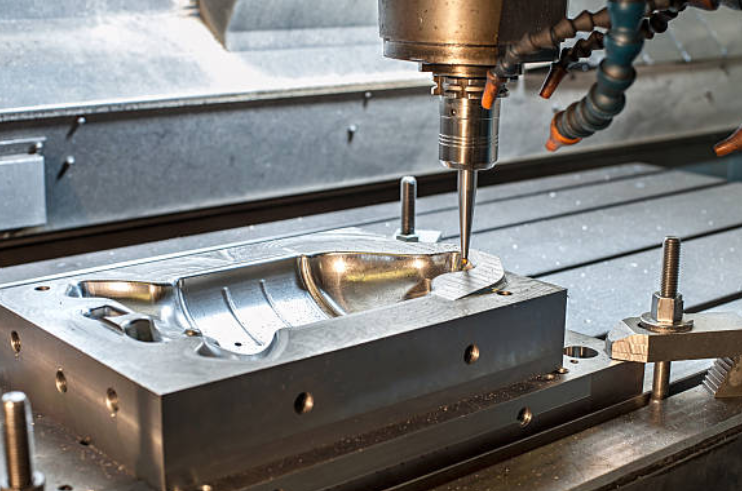Introduction
Injection molding is a pivotal manufacturing process used to produce intricate and durable parts with high efficiency and precision. This guide provides an in-depth exploration of the injection molding process, covering its stages, equipment, materials, applications, advantages, and considerations for optimizing production.
H1: What is Injection Molding?
Definition of Injection Molding
- Injection molding is a manufacturing technique where molten material, typically plastic, is injected into a mold cavity under high pressure. Once cooled and solidified, the mold opens, and the finished part is ejected. This automated process is renowned for its ability to produce complex parts with consistent quality and minimal material waste.
H2: Stages of the Injection Molding Process
1. Mold Clamping
- The two halves of the mold are securely closed and clamped together. This step ensures that the mold cavity is tightly sealed to prevent material leakage during injection.
2. Injection of Molten Material
- The molten plastic material, heated to a precise temperature in the injection unit of the machine, is injected into the mold cavity under high pressure. This pressure forces the material to fill the mold completely and replicate the shape of the mold cavity and any features inside it.
3. Cooling and Solidification
- After injection, the molten plastic inside the mold cools and solidifies to take on the shape of the mold cavity. Cooling time is crucial as it affects part quality, dimensional stability, and cycle time.
4. Mold Opening
- Once the material has solidified, the mold opens to reveal the newly formed part. This process is facilitated by the ejection system, which may include pins, sleeves, or automated mechanisms to push the part out of the mold cavity.
5. Ejection of the Part
- The finished part is ejected from the mold cavity, either manually or using automated ejection systems. Post-ejection processes such as trimming, deburring, or assembly may follow depending on the part's requirements.
H3: Equipment Used in Injection Molding
Injection Molding Machine
- Central to the injection molding process, the machine consists of an injection unit, mold clamping unit, and control system. It heats and injects the molten material into the mold under controlled conditions of temperature, pressure, and cycle time.
Mold
- The mold, typically made of steel or aluminum, is precision-engineered to form the desired part shape and features. It includes cavities and core inserts that define the part's dimensions and surface details.
Auxiliary Equipment
- Includes material hoppers, heaters, dryers, conveyors, and robotics for material handling, heating, and post-processing operations.
H4: Materials Used in Injection Molding
Types of Injection Molding Materials
- Thermoplastics: Widely used due to their ability to be melted, cooled, and remelted without significant degradation. Examples include polyethylene (PE), polypropylene (PP), and polycarbonate (PC).
- Thermosets: Harden irreversibly during curing, making them durable and heat-resistant. Examples include epoxy resins and phenolic resins.
- Elastomers: Rubber-like materials that return to their original shape after being stretched or compressed. Examples include silicone and natural rubber.
Material Selection Considerations
- Factors such as mechanical properties, chemical resistance, thermal stability, and cost guide material selection for specific applications in injection molding.
H5: Advantages of Injection Molding
High Efficiency and Productivity
- Injection molding enables rapid production cycles with minimal material waste, making it cost-effective for high-volume manufacturing.
Complex Part Geometries
- The process accommodates intricate designs, undercuts, and complex part geometries with consistent quality and dimensional accuracy.
Material Versatility
- Supports a wide range of materials and additives to achieve specific mechanical, thermal, and aesthetic properties tailored to application requirements.
Scalability and Consistency
- From prototyping to full-scale production, injection molding offers scalability and ensures consistent part quality across batches.
H6: Applications of Injection Molding
Automotive Industry
- Production of interior and exterior components, dashboards, bumpers, and electrical housings.
Consumer Goods
- Manufacturing of household items, packaging, toys, and electronic enclosures.
Medical and Healthcare
- Fabrication of medical devices, surgical instruments, and disposable components with strict hygiene standards.
Industrial Components
- Production of machine parts, housings, and complex assemblies for various industrial applications.
H7: Considerations for Optimizing Injection Molding
Design for Manufacturing (DFM)
- Optimize part designs for moldability, including draft angles, wall thickness, and part geometry to minimize defects and ensure smooth production.
Tooling and Mold Maintenance
- Regular maintenance and inspection of molds ensure longevity, reliability, and consistent part quality throughout production runs.
Process Control and Monitoring
- Implement robust process control measures, including real-time monitoring of temperature, pressure, and injection parameters to maintain part consistency and quality.
FAQ - Frequently Asked Questions about Injection Molding
Q1: What are some common defects in injection molded parts? A: Common defects include sink marks, warping, flash, and knit lines, which can be mitigated through proper mold design, material selection, and process optimization.
Q2: How does injection molding compare to other manufacturing processes like 3D printing? A: Injection molding is ideal for high-volume production of precise and complex parts with superior mechanical properties, whereas 3D printing offers rapid prototyping and customization capabilities for smaller production volumes.
Q3: What role does mold temperature play in injection molding? A: Mold temperature affects part quality, cycle time, and material flow. Proper control of mold temperature ensures uniform cooling and dimensional stability of molded parts.
Q4: How can injection molding contribute to sustainable manufacturing practices? A: By minimizing material waste, optimizing energy consumption, and enabling recyclability of thermoplastic materials, injection molding supports sustainable manufacturing initiatives.
Q5: What are the benefits of using robotics in injection molding operations? A: Robotics enhance automation, efficiency, and precision in material handling, part removal, and secondary operations, reducing labor costs and improving overall production throughput.
Conclusion
Injection molding tech is a versatile and efficient manufacturing process pivotal to diverse industries for producing high-quality plastic parts. Mastering its stages, equipment requirements, material options, and optimization strategies is crucial for achieving cost-effective production, ensuring part quality, and meeting stringent design specifications. Whether for automotive components, consumer goods, medical devices, or industrial applications, injection molding offers scalability, precision, and sustainable manufacturing solutions.

